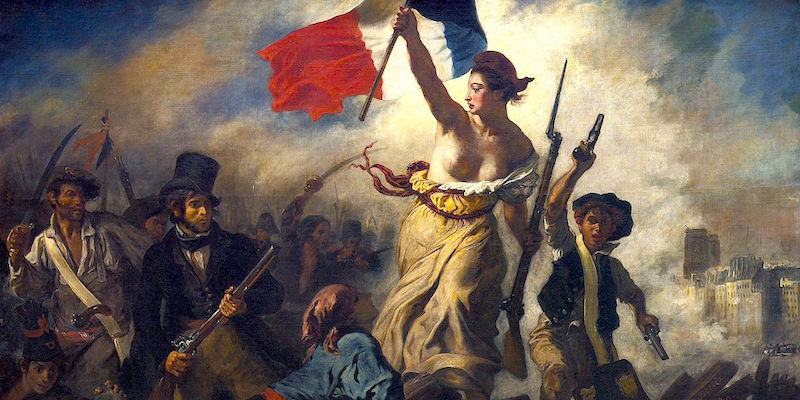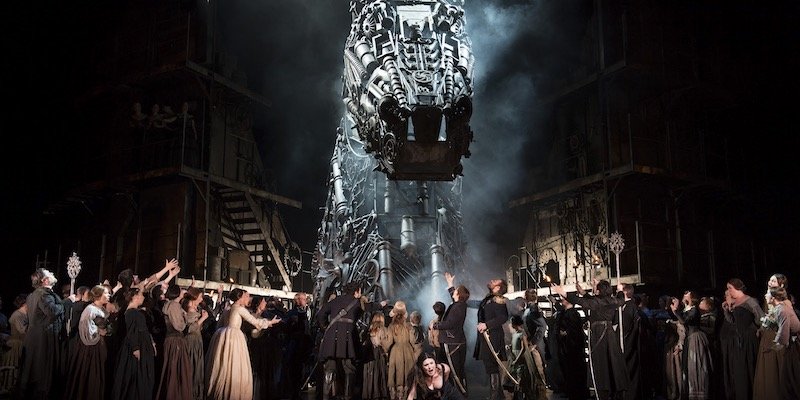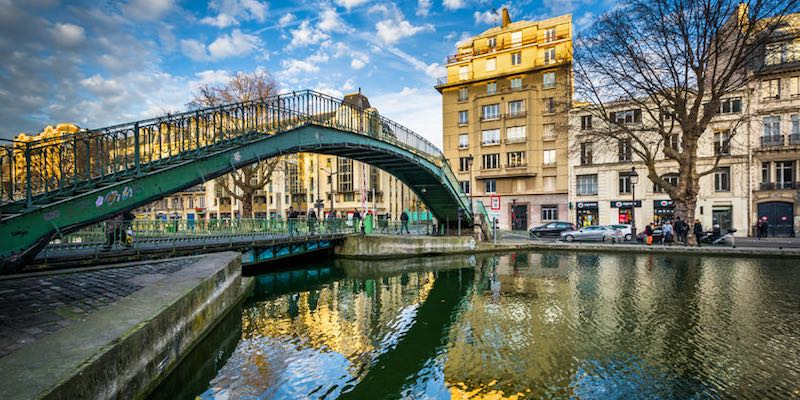From Prison To Opera House – 11 Surprising Facts About The Bastille
It was once a dreaded prison, now it's only a column. On July 14, 1789, 633 angry French citizens stormed the Bastille in Paris (a prison somewhat equivalent to the Tower of London), capturing its munitions, releasing its seven prisoners, lynching the governor and demolishing the fortress. This was the dramatic start of the French Revolution.
![]()
Our Top-Rated Paris Bastille Experiences
1. A Grand Opera at Opera Bastille… An experience you won't ever forget
2. The French Revolution Walking Tour… Visit the sites & relive the events
3. Cruise Canal Saint-Martin & the Seine River… Sail under Place de la Bastille!
4. Taste of the Marais Food Tour… Fromageries, boulangeries, charcuteries, wine shops & more
A Symbol Of Tyranny
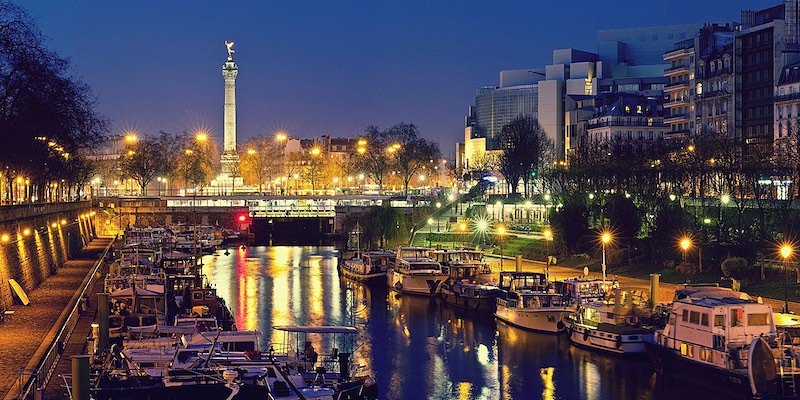 View of Place de la Bastille today, photo Ville de Paris
View of Place de la Bastille today, photo Ville de Paris
Yes, there were only seven prisoners, but the Bastille prison tower had become a symbol of tyranny. The monument that stands today in the center of the Place de la Bastille commemorates not the original French Revolution, but another, later, revolution. Today, the term "Bastille" describes a column, a place, an opera house, an historic event, and an annual celebration.
![]()
Discover What's On When You're Here...
• January... |
• February... |
• March... |
• April... |
• May... |
• June... |
• July... |
• August... |
• September... |
• October... |
• November... |
• December... |
Discover What's On When You're Here
• January...
|
• February... |
• March... |
|---|---|---|
• April... |
• May... |
• June... |
• July... |
• August... |
• September... |
• October... |
• November... |
• December... |
The Bastille Column
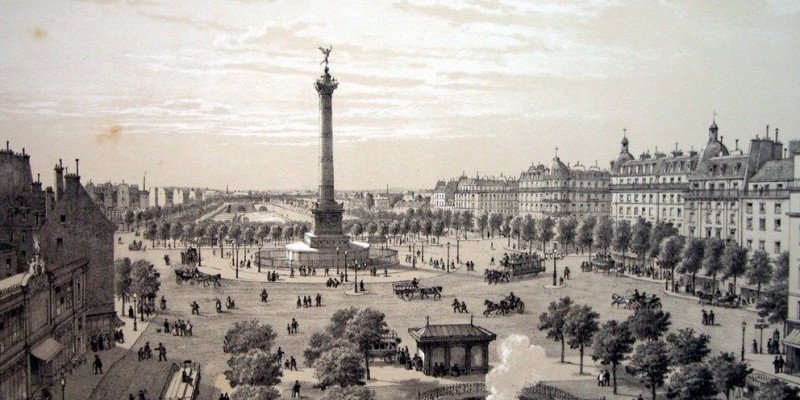 Place de la Bastille and the Bastille Column, 1885
Place de la Bastille and the Bastille Column, 1885
It was during this revolution — called la Trois Glorieuses — that the French monarchy was finally overthrown.
The column you see today in the centre of Place de la Bastille has nothing to do with the French Revolution of 1789. The Colonne de Juillet was erected at the former location of the Bastille prison (today the juncture of the 4th, 11th, and 12th Arrondissements) as a monument to another revolution that took place in 1830. In this so-called July Revolution, which lasted only three days, the French absolute monarchy was finally overthrown.
French king Charles X abdicated on August 2, 1830 and a constitutional monarchy was instituted. (How France ended up with yet another king after the revolution is another story.) The current column stands as a symbol of liberty and a memorial to those who took part. Constructed of heavy cast drums it features an interior spiral staircase. Names of Parisians who died during the 1830 revolution are engraved in gold on the column. Atop the column is the god Mercury astride a gilded globe.
![]()
Romantic Dinner Cruises In Paris
|
VIP Dinner Cruise with Bateaux Parisiens |
Dinner Cruise by Maxim's of Paris |
|
VIP Dinner Cruise with Bateaux Parisiens |
The French Revolution Walking Tour
You can relive the events of the French Revolution on this historical Paris walk, as you visit the sites of that historic era, including the Bastille, and learn about its fascinating history, like the capture of Marie Antoinette and Louis XVI.
![]()
Experience the Splendor Of Versailles
|
Versailles with Priority Access + Gardens |
Half-Day, Skip-the-Line Tour of Versailles |
|
Versailles with Priority Access + Gardens |
Opera de la Bastille
Exactly 200 years after the famous riot that started the French Revolution, this landmark opera house was inaugurated in 1989 by President Mitterrand. Today, it is the main opera house of Paris, and one of the largest in Europe. However, it has not been without controversy.
Some initial attendees complained about the acoustics, other people complained about the Burgundian stones falling off the sides of the building. Complain they might, but every seat at the Opéra Bastille offers an unrestricted view of the stage and every seat is almost always filled.
Some music lovers prefer the ornate and luminous decoration of the more traditional Palais Garnier, the former opera house now used mostly for dance. It seems that although the French stormed the Bastille at some level they prefer the old-fashioned approach. See for yourself. Today the Opera Bastille is home to grand operas and elaborate ballet stagings and is well worth visiting for a spectacular performance.
![]()
Top-Rated Paris Museum Tours
|
The Louvre's Greatest Masterpieces |
Musé d'Orsay Guided Tour |
|
The Louvre's Greatest Masterpieces |
Most Bastille Day Activities Do Not Take Place at Bastille
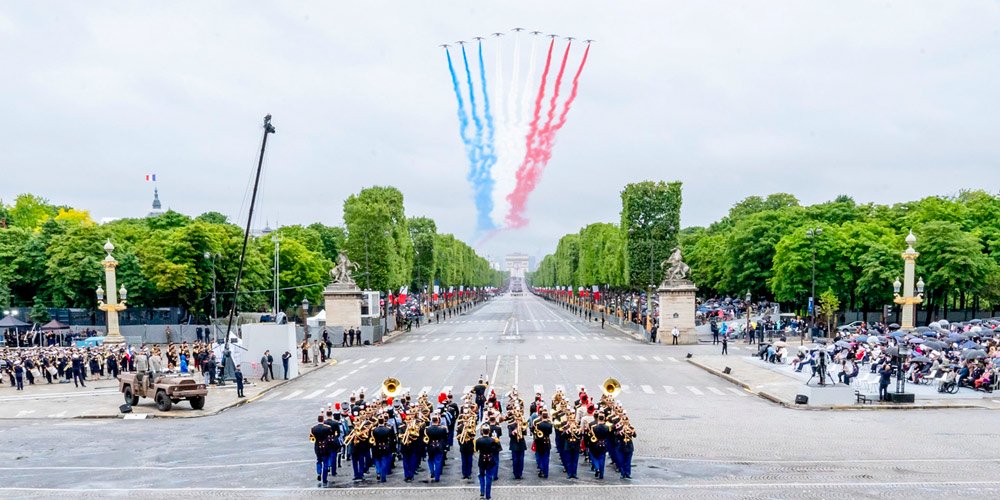 The annual Bastille Day parade along Champs-Elysées, photo from Office of the French President
The annual Bastille Day parade along Champs-Elysées, photo from Office of the French President
In France, Le Quatorze Juillet (Bastille Day, July 14) is celebrated with parades, fireworks and dances, but few of them take place at Place de la Bastille. The Bastille Day military parade, for instance, starts from the Arc de Triomphe, then follows a route along Champs-Elysées to Place de la Concorde. On Bastille Day evening, fireworks take place on and around the Eiffel Tower.
But the place is often the site of parades and demonstrations throughout the year. Because of its connection with (capital-L) Liberty, Place de la Bastille is the center of political action in Paris when it takes to the streets with protests, speeches, and political rallies.
![]()
Our Most Popular Day Trips from Paris
|
Spend a Day in the Champagne Region |
Visit the Historic D-Day Beaches |
|
Visit the Historic D-Day Beaches |
Cruise the Seine, the Canals… and UNDER the Bastille
Did you know that you can take a slow boat ride on the canals built by the Napoleons and pass right underneath Place de la Bastille? Napoleon Bonaparte ordered the construction of Canal St Martin and associated waterways. Half a century later his nephew, Napoleon III, modernized Paris, including sending part of this famous waterway underground.
You board a special canal boat in northeast Paris at Parc de la Villette, pass through a large artificial pond and then the boat enters a tunnel and passes right under Place de la Bastille before finally emerging into the Seine. (Some of the cruises go the other way, starting in the Seine and ending at Villette.) It's unusual, fun, and surprisingly relaxing!
![]()
Find Hotel Deals for Your Dates in Paris
Check the complete list of Paris hotels to find current sale prices on rooms in every arrondissement. Save 10%, 20%… or even more! |
Paris Hotel Deals |
Find Hotel Deals for Your Dates in Paris
Save on hotels in every arrondissement of Paris – the Latin Quarter, Saint Germain, the Right Bank, the Marais, near the Eiffel Tower. Save 10%, 20%… or even more! |
Bastille – More History & Lore
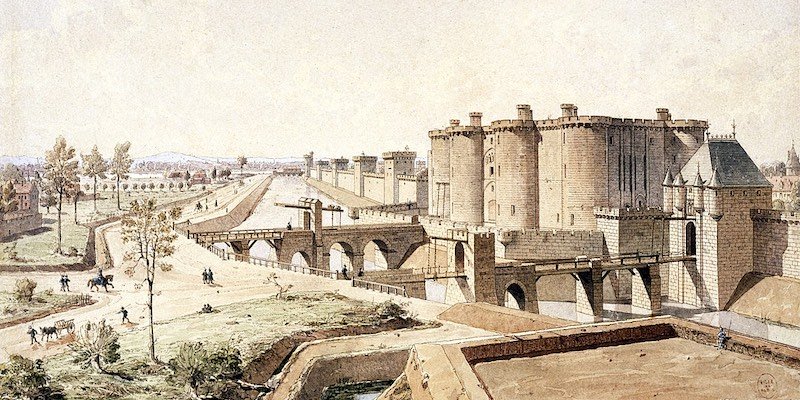 The Bastille fortress and Paris city walls in 1420
The Bastille fortress and Paris city walls in 1420
![]()
Not Intended as a Prison
Even though its claim to fame was as notorious prison, the Bastille was originally built as a fortress, a part of the city walls, to protect the city of Paris from the threat posed by the English armies during the Hundred Years' War. Work began in 1370.
A Nexus of French Conflict
Instead of protection from English troops, as was intended, the Bastille ended up being used by one side or the other during internal French conflicts, such as the wars between the Burgundians and the Armagnacs, and religious wars of the 16th century.
![]()
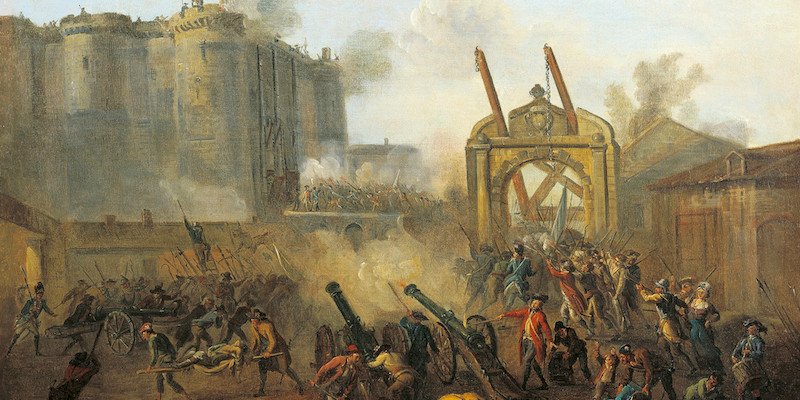 Storming of the Bastille prison, July 4, 1789
Storming of the Bastille prison, July 4, 1789
![]()
More Fortress Than Prison
It actually wasn't until 1659, during the reign of Louis XIV, that the Bastille began to be used as a state penitentiary. It had been built to keep people out, not in, so it wan't the best prison ever. Most of the inmates were members of the French upper classes who disagreed with the Sun King.
A Model Fortification
When the Bastille was first constructed in the 14th century it was admired, and copied throughout Europe, as a modern, powerful fortification that pioneered such advances as four sets of drawbridges.
![]()
Delicious Activities in the Marais
|
Marais Food & Wine Tour |
Cheese & Wine Tasting in a Paris Cellar |
|
Cheese & Wine Tasting in a Paris Cellar |
![]()
 Place de la Bastille after a 21st-century renovation
Place de la Bastille after a 21st-century renovation
![]()
A Comfortable Jail
Contrary to popular belief, the conditions for prisoners in the Bastille were exceptional. The Marquis de Sade arrived with an elaborate wardrobe, artwork, tapestries, perfumes, servants, a small library, card games, and a selection of wine.
Its Destruction Took Months
The Bastille prison wasn't destroyed overnight, not even by the end of July 1789. It took planning by a revolutionary committee and months of debate to decide on the final plans to dismantle it. It wasn't until November 1789 that the prison was destroyed.
![]()
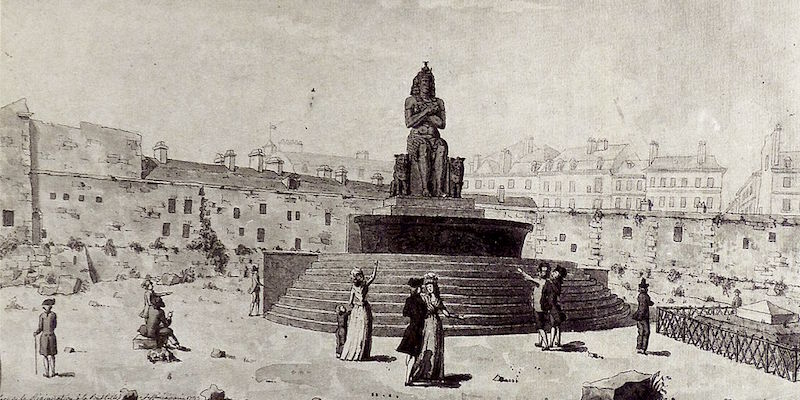 Fountain and Statue of Isis, Place de la Bastille, 1793
Fountain and Statue of Isis, Place de la Bastille, 1793
![]()
The Fountain of Isis
In 1793, five years after the initial revolutionary events, a fountain featuring a statue of Isis was built on the former site of the fortress/prison, while the square renamed the name of Place de la Bastille.
Wine, but No Torture
There is absolutely no evidence of torture or ill-treatment of prisoners at the Bastille. Remember the Marquis de Sade with his servants, library & wine collection? Torture? — just didn't happen.
Paris Planning Guides
 Book an Airport Transfer
Book an Airport Transfer |
 Left Bank Hotels
Left Bank Hotels |
 Glorious Dinner Cruises
Glorious Dinner Cruises |
 Skip-the-line Louvre Tour
Skip-the-line Louvre Tour |







